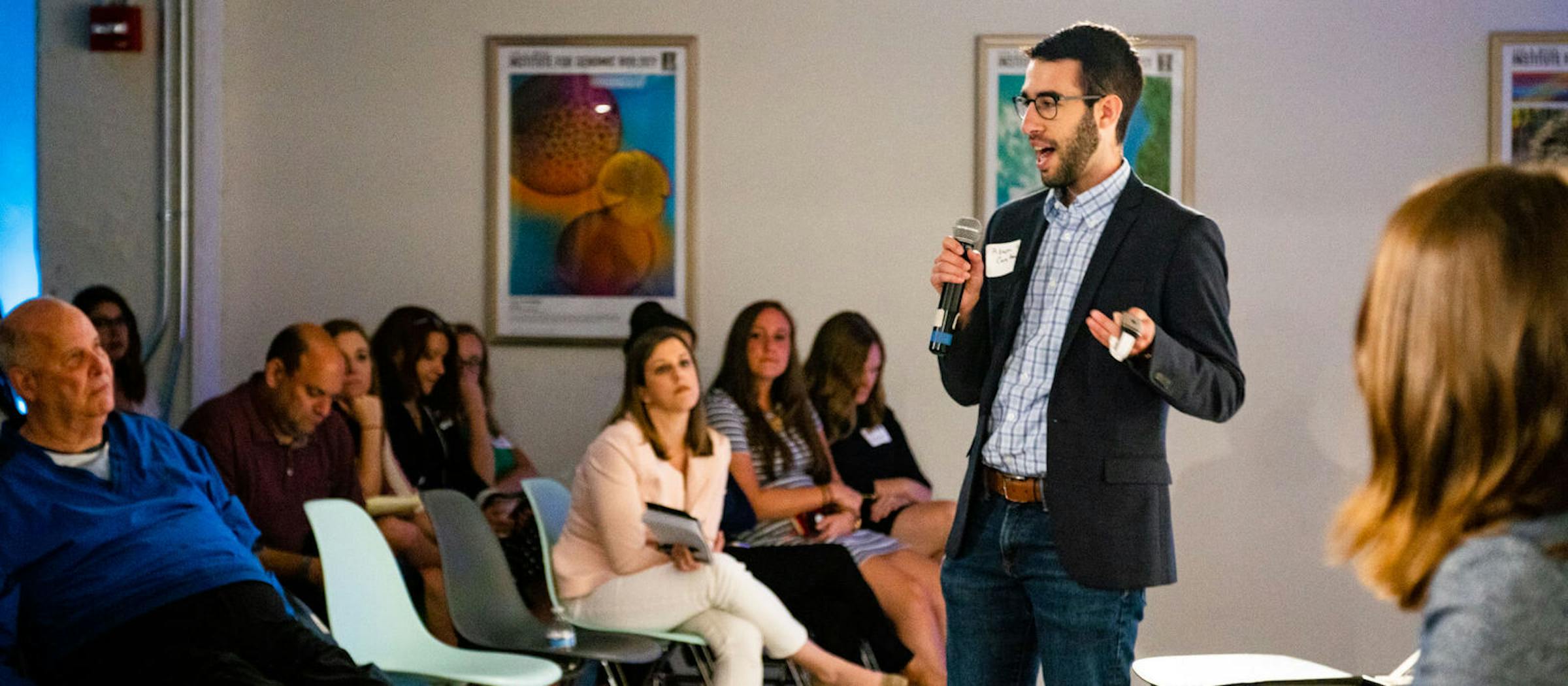How CareBand is using wearable technology to automate contact tracing and monitor social distancing compliance
As the country shifts to opening more businesses and bringing employees back to the workplace, contact tracing solutions — or solutions that track the interactions of infected individuals — have become increasingly popular and essential to this new way of living. According to Adam Sobol, CEO and founder of MATTER startup CareBand, he realized the importance and demand for these solutions as early as March.
Founded in 2016, CareBand’s mission is to improve the quality of life of people living with dementia through wearable solutions that monitor location, behavior, and activity and alert caregivers to early changes in condition. Now, the startup has expanded their solution by adjusting that same technology to create their own contact tracing and social distancing solution. We caught up with Adam to talk about CareBand’s new solution, SafeTrack, and the inspiration behind the technology.
Responses have been slightly edited for length and clarity.
1. What was the challenge that COVID-19 created and that you thought you could solve?
“Back in March, we started getting interest from a few foreign governments around using our wearable solutions to manage COVID-19. At first we were hesitant to change our focus from dementia to COVID-19, yet as we continued conversations with the foreign governments, we realized there was a huge opportunity to help. Specifically, we saw the potential to provide simple and affordable contact tracing and social distancing solutions. At the time nobody was solving this challenge and even now, there’s still an opportunity in the market.”
2. Describe your solution.
“Our solution focuses on managing risk for organizations through automated contact tracing and social distancing compliance metrics. Today contact tracing is mostly manual. There had been a few solutions that launched using the Google and Apple Exposure Notification (GAEN) protocol, but these solutions had challenges as there were a lot of security and privacy concerns — we saw a need for an alternative to the smartphone based solution.
“Simply, it starts with two or more people wearing the SafeTrack devices. Once those people are within six feet of each other for more than a few minutes, the device creates a contact record. That record includes the ID of the devices that each person is wearing, the distance of those devices and the time of that interaction. Over time, it collects all these interactions of different people, and when there’s a COVID-19 positive outbreak, a case is created in our web-based dashboard. That case automates the contact tracing by creating a report with all the devices that that individual interacted with within the past week. The case also sends a notification out via text, call or email to everyone who has been in contact with that person and connects them with their public health authority or closest testing center.”
3. Can you talk a little bit about your motivation for working on this solution?
“It’s two fold. One is that our technology was already built and we just needed to create some new software, so it could solve the current public health challenge and get a solution to the market quickly. Second, it gave our team something positive to focus on — a tangible way that we could help the world during this pandemic.”
4. What obstacles did you face when building this solution?
“We encountered a lot of challenges around the supply chains — for example, if we needed to get parts from China or devices manufactured, it was difficult to have a reliable timeline.
“The other challenge has been around requirements and regulations…We’re building a solution as fast we can, but the requirements for what is right or wrong and the regulations are constantly changing. Our approach has been to continue educating ourselves as much as possible as new research comes out and check in with front-line geriatricians about what is actually happening in the field.”
5. There are a lot of privacy concerns around smartphones, wearables and location tracing. How are you approaching the challenge of getting people to use and trust your device?
“There’s a lot of concern about data privacy with wearables and smartphones — and the conversation around location tracking during COVID-19 has amplified that. So we decided intentionally not to do any location tracking. SafeTrack only tracks other devices interacting with one another for a certain period of time. If a user wants to include the name of who owns that device, they can do that. If they’d rather keep their identifying information private, they can just use the device ID, which has no health information about the person wearing it. We’ve been really intentional in thinking about how we can deliver a solution that doesn’t invade anyone’s personal privacy and security.“
6. Is your SafeTrack device currently in use by anyone? What has the feedback been like?
“We have a pilot going on here in Chicago and one in Toronto as well. We’ve had folks who have been using the software interface as well as the devices, and we’ve gotten very positive feedback so far. These facilities really didn’t have enough people or time to do contact tracing themselves. So it’s really valuable to them to have our technology in place.”
7. If someone is interested in trying your device, can they purchase it now?
“We’re selling demo kits right now to customers through system integrators and channel partners, but there are also a large number of consultants who are looking for solutions. We’re selling those today from our website.”
8. Do you have any advice for other startups looking to shift their product offerings for COVID-19?
“It takes a lot of trust that the market is going to be there once your product is ready. It also takes a lot of flexibility and an understanding that we have a constantly changing market, so companies need to be able to switch their entire mindset quickly.”



